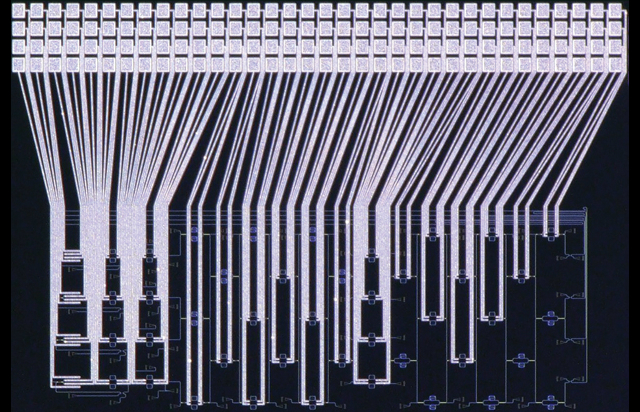
In fact, Moore’s Law, which has predicted continued increases in processor performance throughout the history of computing, is starting to lose its power and new types of processors are being sought to keep computer processing power on the increase. One such technology is light-based chips that could boost power without increasing energy requirements, and Hewlett Packard Labs has built the largest one so far, as IEEE Spectrum reports.
Hewlett Packard Labs is part of Hewlett Packard Enterprise (HPE), and the research arm of HPE is not the first to pursue more computational power through photons instead of electrons. Light-based processors are nothing new, but HPE’s effort packs in 1,052 optical components into a single chip, marking the largest and most complex effort at using light to perform calculations.
The United States Defense Advanced Research Project’s Agency (DARPA) is funding the project as part of its Mesodynamic Architecture program, which is aimed at using unique materials and energies for “unrivaled” communication, computation, and other capabilities. HPE is currently working on implementing an Ising machine using the new chip, which is a computational model that uses certain properties of the magnetic fields of atoms to solve computationally difficult optimization challenges such as the “traveling salesman problem.”
The HPE chip is an attempt to overcome some limitations in an earlier Ising machine created at Stanford University that used mirrors, lasers, and other optical parts. That machine suffered from acoustic noise interference, which the same team addressed by adding in electronic feedback mechanisms. The HPE chip is intended to bypass the need for electronic feedback with a more compact design that by its nature avoids the effects of vibrations and other influences.
The science behind HPE’s new optical chip may be complex and difficult for all but the researchers behind it to understand, but the applications for it are clear. Such light-based Ising machines could be used to accelerate certain specialized computational applications much like today’s speedy GPUs are used in parallel processing machines. If Moore’s Law is resurrected, it could very well be done with light instead of electricity.



